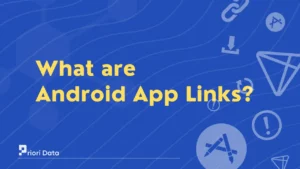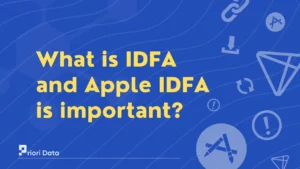CTIT (Click-Through Injection Testing) is a methodology used to detect different types of ad fraud related to clicks.
It focuses on identifying anomalous spikes in click traffic that may indicate fraudulent activities like click flooding or click injection attacks.
CTIT analyzes clickstream data and looks for sudden surges in clicks that do not correlate with normal traffic patterns.
Key aspects of CTIT include:
- Monitoring click traffic in real-time to identify spikes and unusual patterns. This allows the detection of click fraud as it occurs.
- Comparing click traffic to baseline historical patterns to identify anomalies. Large variances from normal traffic levels raise red flags.
- Analyzing click patterns across different dimensions like geography, device type, IP address, etc. Unusually concentrated clusters may indicate click spamming.
- Leveraging statistical models and machine learning to score click traffic for fraud probability. Models can catch subtle signs of click injection that humans may miss.
- Conducting A/B testing by serving ads to bot traffic and real user traffic. Differences in click patterns can reveal fraudulent clicks.
- Drilling down on suspicious clicks to verify attributes like IP, user agent, frequency, etc. Fraudulent clicks often have telltale signs upon close inspection.
Overall, CTIT provides a rigorous methodology to detect, analyze and confirm different varieties of click fraud attacks that may be conducted on online ad campaigns. The granular analysis allows specific attack vectors to be pinpointed.
How CTIT can help with detecting ad Frauds ?
CTIT is an invaluable tool for detecting and mitigating various types of ad frauds including:
1. Click Flooding
This involves the large-scale generation of fake clicks on ads by bots or compromised devices. CTIT can identify click flooding by detecting large spikes in traffic from specific IPs, geographies, or device profiles that deviate from normal patterns. The precise distribution and source of the clicks expose click flooding.
2. Click Injection
This uses malware or scripts to simulate clicks on ads on real devices without user consent. CTIT can detect click injection by analyzing whether clicks have natural user flows or are aberrant spikes with no corresponding user sessions. The precise timing and distribution of clicks help uncover injection.
3. Attribution Fraud
This artificially boosts attribution numbers by claiming credit for conversions that didn’t really occur due to ads. CTIT analyzes if claimed conversions correlate to actual ad clicks and user flows. Missing correlations signal attribution manipulation.
4. Pixel Stuffing
This generates fake ad calls by repeatedly firing tracking pixels or SDKs. CTIT detects pixel stuffing by identifying irregular call spikes or unusual pixel firing sequences.
5. Device Spoofing
This fakes clicks and conversions by spoofing device IDs like advertising IDs. CTIT detects spoofing by flagging device IDs with impossible usage patterns and geography/time anomalies.
6. Sophisticated Bots
Advanced bots can mimic human behavior making clicks hard to detect. But CTIT analyzes patterns like click rhythms, trajectories, precision etc over time to identify bot networks.
By leveraging rigorous click analysis, CTIT provides comprehensive protection against varied ad fraud tactics that siphon off advertising dollars. The granular visibility it provides allows specific vulnerabilities to be fixed.
Detecting click spamming (click flooding)
Click spamming or click flooding refers to large volumes of fraudulent clicks generated on online ads to artificially drive up costs per click. Detecting such click spamming is a key application of CTIT. Some ways it identifies click flooding include:
- Traffic spike analysis – Analyzing trends over time can identify sudden traffic spikes that are abnormal and indicate possible click spamming. Traffic should align to trends and seasonality patterns.
- Geography analysis – Clusters of clicks coming from specific obscure geographical locations may indicate click spamming bots. Click distribution should map to audience geographies.
- IP analysis – Too many clicks originating from a single IP address signals the likelihood of click spam. IPs should have sensible click frequency caps.
- Device analysis – Many clicks from a small number of devices or device types can expose click-spamming apps and bots. Device distribution should be dispersed.
- Referrer patterns – Clicks driven by specific low-quality referrers that do not match usual content sources denote spamming.
- Timing patterns – Click spamming may follow atypical hourly, daily, or weekly distribution peaks, unlike natural traffic. Click rhythms should align with normal engagement patterns.
- Click sequence – Click spamming bots tend to exhibit repetitive and formulaic click patterns, unlike human exploration flows. Click sequencing should be variable.
By applying these techniques, advertisers can quickly detect, analyze, confirm and block sources of potential click flooding to stop wasted spending and counter fraudsters. The insights can also be used to fine-tune targeting and improve campaign performance.
F.A.Q
Q1: What is the average click to install time?
A1. The average click to install time is 2-3 minutes.
Q2: What is a good click to rate?
A2. A good click-through rate is 2% or higher.
Q3: What is a decent click rate?
A3. A decent click-through rate is 1-2%.
Q4: Is 50% click-through rate good?
A4. Yes, a 50% click-through rate is very good.
Q5: How do I increase my click-through rate?
A5. You can increase click-through rate by improving ad targeting, creativity, and landing page experience.






